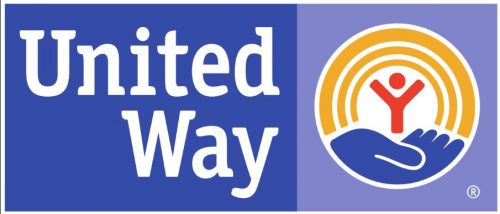
United Way of Florida, the statewide association of United Way chapters, in conjunction with United For ALICE, has unveiled the latest ALICE report, ALICE In Florida: A Financial Hardship Study. The study identifies county-by-county and town-level challenges and realties facing the ALICE population – households that identify as Asset Limited, Income Constrained, Employed.
These households represent individuals and families working one or more jobs but due to stagnant wages and the increased cost of living expenses like healthcare, childcare, utilities, and housing, they remain one hardship away from financial crisis.
In Escambia and Santa Rosa counties, 34% and 24% of households, respectively, earn more than the Federal Poverty Level, but less than the basic cost of living for the county – known as the ALICE Threshold. An additional 12% of households in Escambia County and 8% in Santa Rosa County are in poverty.
The statewide average for ALICE households is 33% while households in poverty is 8%.
Of 118,820 Escambia County households, 23% of families with children, 35% of single and cohabitating households, and 40% of those with seniors aged 65 and over identify as ALICE.
Of 63,891 Santa Rosa County households, 19% of those with children are ALICE, as are 23% of single and cohabitating households, and 33% of 65 and over households.
“The data that informs the ALICE report is always an integral part of our organization’s ability to identify and address the financial hardships facing many working folks and families in our community,” said United Way of West Florida President and CEO, Laura Gilliam. “The reality the data paints is that nearly half of the households in our community – a continually growing number – are working but unable to get ahead financially due to myriad factors like the employment landscape, worker vulnerabilities and protections, stagnant wages, and growing living expenses.”
The Household Survival Budget included in the report details the monthly costs of housing, childcare, food, transportation, healthcare, technology, miscellaneous expenses, and taxes. This budget is the bare minimum cost to live and work in the modern economy and does not include savings for emergencies or future goals like college or retirement.
In Escambia County, the Household Survival Budget is $24,696 for a single adult, and $66,324 for a family consisting of two adults, one infant, and one preschooler. The hourly wage necessary to be able to afford the Household Survival Budget is $12.35 for a single adult and $33.16 for a family of four.
In Santa Rosa County, the annual Household Survival Budget is $26,664 for a single adult and $71,316 for a family of four. The hourly wage required to meet this budget is $13.33 for an individual and $35.66 for a family of four.
Both counties’ annual budgets are well above the Federal Poverty Level of $12,140 for a single adult and $25,100 for a family of four.
COVID-19 PANDEMIC EXACERBATES STRUGGLES OF ALICE POPULATION
By presenting the latest ALICE data available, a point-in-time snapshot of economic conditions across the state in 2018, ALICE In Florida: A Financial Hardship Study shows how many Florida households were struggling then and provides context to why the COVID-19 crisis is having such a devastating economic impact.
When COVID-19 hit, nearly 2.6 million Florida households (nearly 33%) were considered ALICE, and one emergency away from financial ruin – a 10-year record high – setting the stage for the unprecedented economic impact of this crisis.
Rising unemployment, closed businesses, and halted production of many goods and services has already reduced the income of millions of families across the state. 14% of households on the cusp of the ALICE Threshold in 2018 are especially vulnerable.
The number of households unable to afford household essentials had been growing over time before the pandemic began. The percentage of households below the ALICE Threshold increased from 33% in 2007 to 46% by 2018.
The number of ALICE households will increase with the economic disruption caused by COVID-19.
“Because ALICE is such a pivotal part of United Way’s work, we anticipated this being a demographic disproportionately affected by COVID-19,” said Gilliam. “In an effort to support this population through this pandemic, our COVID-19 Response Fund Grants target assistance to ALICE. It’s important that we do all that we can to help these individuals and families remain financially stable as their lives are impacted by lost hours, wages, and what security they may or may not have had.”
ALICE ACROSS FLORIDA
Based on data from the 2018 American Community Survey (U.S. Census Bureau), ALICE in Florida: A Financial Hardship Study shows that the cost of survival ranges annually from $24,060 for a single adult, to $27,348 for a senior citizen, and $69,515 for a family of four with an infant and preschooler. Putting this in perspective, the median hourly wage in Florida is $22,040, less than all the budgets.
A new measurement debuting in this report is the ALICE Essentials Index. This reveals the severe disparity between wages and the cost of basic necessities. The Index shows how the cost of housing, childcare, food, transportation, healthcare, and a smartphone plan rose at nearly twice the rate of inflation, as measured by the Consumer Price Index – 3.4% annually over the past decade across the country versus 1.8%. Meanwhile, ALICE’s wages remained stagnant.
CONCLUSIONS
ALICE In Florida: A Financial Hardship Study shows that based on 2018 data, bringing all households to the ALICE Threshold would generate an economic benefit of $244 billion, growing the state GDP by 23%. Florida’s 2018 GDP reflected community spending of $52 billion on assistance to the state’s households below the ALICE Threshold.
The report also identifies the benefits ALICE households and communities would experience if they were able to afford things like safe, affordable housing, reliable transportation, quality healthcare, savings, and more.
For instance, ALICE households able to afford safe, affordable housing would experience “improved health through safer environments and decreased stress, improved educational performances and outcomes for children, greater stability for household members, and a means to build wealth for homeowners. This also creates community impacts such as less traffic, lower healthcare costs, better maintained housing stock, lower crime rates, and less spending on homelessness and social services.”
The report concludes that strengthening communities by strengthening ALICE families means a higher quality of life for all.
The ALICE Report for Florida is a project of United For ALICE, a grassroots movement of over 650 United Ways in 21 states, corporations and foundations, all using the same methodology to document financial need. ALICE Reports provide county-by-county and town-level data, and analysis of how many households are struggling, including the obstacles ALICE households face on the road to financial independence.
For more information, or to find data about ALICE in local communities, visit www.UnitedForALICE.org/Florida.





































